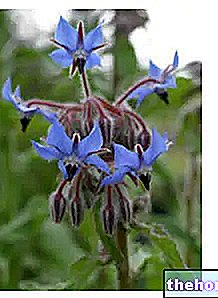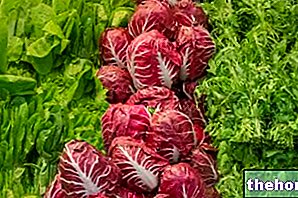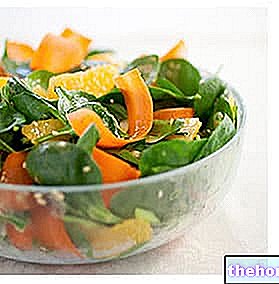Introduction
Countless common and dialectal names attributed to Cantharellus cibarius: chanterelle, cockerel, chanterelle, gialletto, garitula etc. For those who do not know what we are talking about, we will immediately give a brief explanation: chanterelles are precious mushrooms, distinguished by their particular flavor, wavy shape and almost unmistakable orange, golden or amber color. Among the numerous varieties of mushrooms, chanterelle stands out for its particular preciousness, which goes well with many dishes, including meats, risottos and pastas.
In any case, being mushrooms, chanterelles must be eaten very fresh, since due to rapid rot they could release toxic substances, dangerous for the organism.

Botanical description
Chanterelles are easily distinguished from other varieties of mushrooms: the unmistakable characteristics are attributed in particular to the color of the mushroom, amber and golden, which paints the whole chanterelle from stem to cap. Cantharellus cibarius it has a rather stocky, thin, often not particularly long stem, which ends with a very small cap, with a soft, wavy and irregular shape. The external surface of the mushroom is smooth and the margin is different from chanterelle to chanterelle.
The underside, com "is typical of mushrooms, is warty, characterized by marked and clear folds (pseudolamellae).
More than pulp, it would be more correct to speak of meat chanterelle: it is quite firm, white and spongy, with an unmistakable flavor.
Natural habitat
Chanterelles love to grow in humid and cool environments, especially near coniferous and deciduous trees. In general, chanterelles do not grow solitary, rather they are often found in small groups arranged in an elliptical or circular way.
Generality
Chanterelle is unique in its species, not only for its shape and botanical characteristics, but also and above all for its smell, taste and consistency: not surprisingly, the quality of this mushroom is appreciated practically everywhere, so much so that it is often evaluated even higher. to that of the porcino.
The raw chanterelle does not have a particular smell, given off during cooking: pleasant, intense and particularly aromatic. The flavor is sweet and particular, and is so intense and full that it is considered the "mushroom parsley", as it is used to embellish and flavor other mushrooms with a less decisive character.
Cooking method
Chanterelles lend themselves to numerous recipes: the mushroom must be eaten very fresh and must always be cooked, unlike other mushrooms even eaten raw.
The classic preparation of chanterelles is clearly cooking in a pan, after careful cleaning, washing and drying: in this way, cooked together with extra virgin olive oil, parsley, pepper, salt and - for those who like it - garlic, chanterelle is suitable to prepare delicious pasta and side dishes, but chanterelles can also be prepared in oil or pickled. On the market, chanterelles are also found dried.
Summary
Chanterelles: TO FIX THE CONCEPTS
Botanical name: Cantharellus cibarius
- Stem: rather stocky, thin, often not particularly long
- Hat: very small, with a soft, wavy and irregular shape
- Color: amber, golden
- External surface: smooth
- Margin: non-compliant
- Under side: warty, characterized by marked and clear folds (pseudolamellae)
- Pulp (chanterelle flesh): firm, white and spongy
- Growth: Chanterelles are often found in small groups arranged in an elliptical or circular way
Smell of cooked chanterelle: pleasant, intense and aromatic
Taste: intense and full → mushroom parsley
- Cleaning, washing and drying → cooking in a pan with oil, parsley, pepper, salt and garlic
- Chanterelle in oil
- Pickled Chanterelle
Other Foods - Vegetables Garlic Agretti Asparagus Basil Beets Borage Broccoli Capers Artichokes Carrots Catalonia Brussels sprouts Cauliflower Cabbage and Savoy cabbage Red cabbage Cucumber Chicory Turnip greens Onion Sauerkraut Watercress Edamame Chives Chanterelles Flour Cassava Flowers Pumpkin Flour Edible Flowers Pumpkin Seasonal Fruits and Vegetables Endive Salads and Salads Strengthening Salad Lettuce Aubergines Vegetables Nettle Pak-Choi Parsnip Potatoes American Potato Peppers Pinzimonio Tomatoes Leeks Parsley Radicchio Turnips Red Turnips Radishes Rocket Shallots Endive Celery Celeriac Seeds Sprouted Spinach Truffle Valianamberi or Jerusalem artichoke laxatives Saffron Pumpkin Zucchini Vegetables - Nutritional properties OTHER VEGETABLE ITEMS Categories Food Alcoholics Meat Cereals and derivatives Sweeteners Sweets Offal Fruit Dried fruit Milk and derivatives Legumes Oils and fats Fish and fishery products Cold cuts S pezie Vegetables Health recipes Appetizers Bread, Pizza and Brioche First courses Second courses Vegetables and Salads Sweets and Desserts Ice creams and sorbets Syrups, liqueurs and grappa Basic preparations ---- In the kitchen with leftovers Carnival recipes Christmas recipes Light diet recipes Women's Day, Mum, Dad Recipes Functional Recipes International Recipes Easter Recipes Recipes for Celiacs Recipes for Diabetics Recipes for Holidays Recipes for Valentine's Day Recipes for Vegetarians Protein Recipes Regional Recipes Vegan Recipes




























